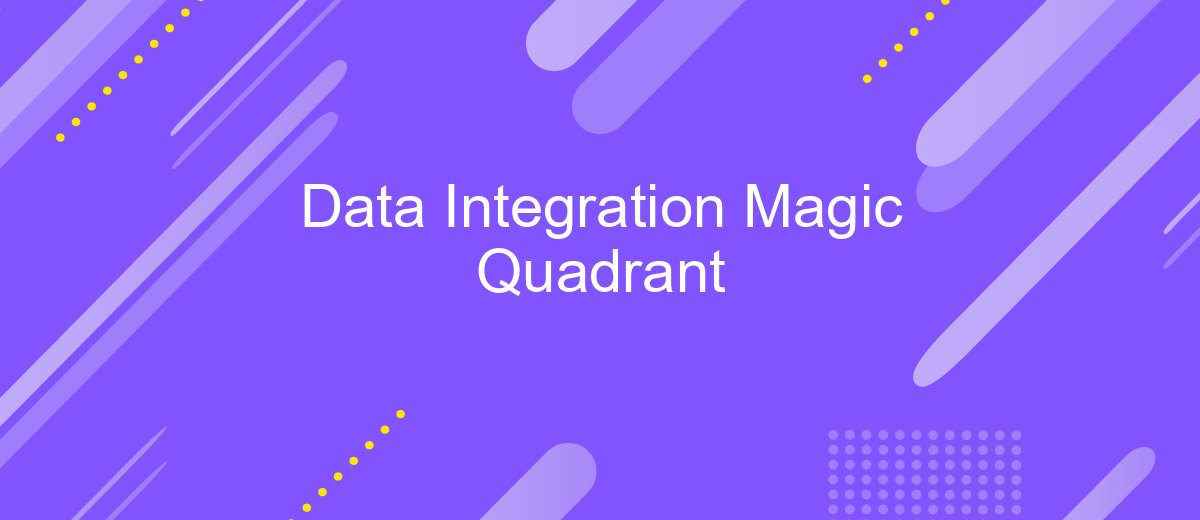Data Integration Magic Quadrant
In the rapidly evolving landscape of data management, the Data Integration Magic Quadrant serves as a critical tool for organizations seeking to streamline and enhance their data integration processes. This comprehensive analysis evaluates leading vendors, offering insights into their strengths, weaknesses, and overall positioning in the market, helping businesses make informed decisions to drive their data strategies forward.
Executive Summary
In the ever-evolving landscape of data integration, businesses are increasingly seeking reliable solutions to streamline their workflows and enhance data accuracy. The Data Integration Magic Quadrant provides a comprehensive analysis of the leading platforms that facilitate seamless data integration, enabling organizations to make informed decisions.
- Evaluation of top data integration platforms
- Key criteria for selecting the right solution
- Benefits of implementing robust data integration tools
Among the myriad of tools available, ApiX-Drive stands out for its user-friendly interface and powerful integration capabilities. It allows businesses to automate data workflows without requiring extensive technical expertise, thereby reducing operational costs and increasing efficiency. By leveraging solutions like ApiX-Drive, organizations can ensure that their data integration processes are both effective and scalable, driving better business outcomes.
Market Definition and Dynamics

The data integration market is evolving rapidly, driven by the increasing need for businesses to unify disparate data sources for better decision-making and operational efficiency. Companies are seeking solutions that can seamlessly integrate data from various platforms, including cloud services, on-premises systems, and third-party applications. This demand is fostering innovation in data integration tools, which now offer advanced features such as real-time data processing, AI-driven data mapping, and automated workflows. These capabilities are essential for organizations aiming to maintain a competitive edge in a data-driven world.
Market dynamics are also influenced by the rise of user-friendly integration services like ApiX-Drive. Such platforms simplify the integration process, allowing non-technical users to connect different applications and automate data flows without extensive coding knowledge. ApiX-Drive, for example, provides a versatile interface that supports a wide range of applications, enabling businesses to streamline their operations and reduce manual data handling. As more companies recognize the importance of efficient data integration, the market is expected to see continued growth and innovation, making it a pivotal area for investment and development.
Vendor Landscape

The vendor landscape for data integration is diverse and continuously evolving, reflecting the growing importance of seamless data connectivity in modern enterprises. Companies are increasingly seeking solutions that can efficiently integrate data from disparate sources, ensure data quality, and provide real-time insights. As a result, vendors are innovating to meet these demands with advanced features and capabilities.
1. **ApiX-Drive**: Known for its user-friendly interface and robust integration capabilities, ApiX-Drive offers a no-code solution that enables businesses to connect various applications and automate workflows effortlessly.
2. **Informatica**: A leader in the data integration space, Informatica provides comprehensive tools for data management, cloud integration, and data governance.
3. **Talend**: Talend excels in open-source data integration, offering scalable solutions that support big data, cloud, and real-time analytics.
4. **Microsoft Azure Data Factory**: This cloud-based service from Microsoft enables data integration across different environments, including on-premises and cloud, with extensive support for ETL processes.
These vendors represent a spectrum of choices for organizations looking to enhance their data integration capabilities. Whether through no-code solutions like ApiX-Drive or comprehensive platforms like Informatica, businesses can find the right tools to meet their specific needs and drive data-driven decision-making.
Evaluation Criteria

When evaluating data integration solutions, it is crucial to consider various criteria to ensure the chosen platform meets organizational needs. Key factors include functionality, ease of use, scalability, and support. These elements collectively determine the effectiveness and efficiency of the integration process.
Functionality encompasses the range of features the platform offers, such as data transformation, real-time processing, and compatibility with diverse data sources. Ease of use refers to the user interface and the learning curve associated with the tool. Scalability ensures the solution can grow with the organization's data needs, while support includes customer service and technical assistance.
- Functionality: Comprehensive features for data transformation and processing.
- Ease of Use: Intuitive interface and minimal learning curve.
- Scalability: Ability to handle increasing data volumes and complexity.
- Support: Reliable customer service and technical assistance.
For instance, ApiX-Drive offers a robust set of tools for seamless data integration, including automated workflows and real-time syncing capabilities. Its user-friendly interface and scalable solutions make it a valuable asset for organizations looking to streamline their data integration processes.


Leaders, Challengers, Visionaries, Niche Players
In the Data Integration Magic Quadrant, leaders are distinguished by their comprehensive vision and execution capabilities. These companies offer robust, scalable solutions that integrate seamlessly with a wide variety of data sources. They often provide advanced features such as real-time data processing, extensive analytics, and strong security measures. ApiX-Drive, for instance, excels in this category by offering a user-friendly interface and powerful automation tools, enabling businesses to streamline their data workflows effortlessly.
Challengers, on the other hand, have strong execution abilities but may lack a complete vision for future market trends. They often excel in specific areas but may not offer the full suite of features found in leaders. Visionaries are forward-thinking companies that innovate and push the boundaries of what’s possible in data integration. However, they may struggle with execution. Niche players specialize in particular segments of the market, offering unique solutions that cater to specific needs but may lack the broader capabilities of leaders or challengers.
FAQ
What is the Magic Quadrant for Data Integration Tools?
How often is the Magic Quadrant for Data Integration Tools updated?
What criteria are used to evaluate vendors in the Magic Quadrant for Data Integration Tools?
Can small businesses benefit from the insights provided by the Magic Quadrant for Data Integration Tools?
What tools or services can help with implementing data integration solutions?
Routine tasks take a lot of time from employees? Do they burn out, do not have enough working day for the main duties and important things? Do you understand that the only way out of this situation in modern realities is automation? Try Apix-Drive for free and make sure that the online connector in 5 minutes of setting up integration will remove a significant part of the routine from your life and free up time for you and your employees.

